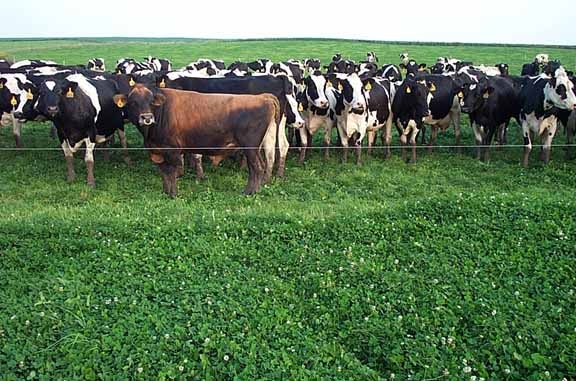
Another week of winds and little rain, has seen soil moisture levels fall further in eastern areas of both islands and pasture growth rates peak below the norm, for this time of year.
Dry land farmers will be reviewing their stocking rates, while irrigators water dry soils and apply urea, as managers look to hold peak milk flows for as long as possible with pasture rotation lengths now returning every 23-27 days.
North Island pasture growth rates especially in western areas have passed the 30kg/dm/day and some paddocks will be being saved for silage and hay, but in the south most of the focus is fully feeding stock on pasture alone.
Peak milk supply is close to the maximum in the north island but still a few weeks away in the south where a slow spring delayed the flush of growth, but the milk flow future is still uncertain with officials from MPI warning farmers to prepare for El Nino.
Statistics have showed the heavy reliance on palm kernel extract as a supplementary feed with June 30 tonnages revealing record volumes were imported, so the Fonterra decision to restrict future usage will have a major impact on dairy farming feeding systems.
Beef and Lamb NZ also revealed that the recent heavy cull on surplus heifers and poor producing cows will lower the nations dairy cattle herd numbers for the first time in 24 years, and rebalance the types of stock carried in NZ's livestock portfolio.
Bulls will now be out with R2 heifers and AI will soon start in the main herd in the south, but is well advanced in the north, as mating preparation plans look to achieve an active and short joining.
Fonterra has had it’s Standard and Poor’s credit rating downgraded as milk price volatility, increased debt, and capital expenditure have all affected investment risk of the business.
And the chairman John Wilson attacked proposers of a motion to reduce the size of the board, as shareholders look for the governance body to refocus on it’s co-operative principles and stem the loss of market share to the growing number of competitors.
The dairy commodity market continues to recover as seen in the rising Oceania figures, but recent returns are now being hindered by a currency that is back in a firming phase.
But overnight a market adjustment, with the golbal trade auction prices easing by 3 % and powders by 4.5% reminding farmers that the recovery will be slow and steady.
Analysts report global dairy prices are also low and farmers overseas will curtail production and trim costs in similar fashion to the way our farmers have done, and the market should respond to this restriction of supply with an increased demand later in the season.
Dairy prices
Select chart tabs
We welcome your comments below. If you are not already registered, please register to comment.
Remember we welcome robust, respectful and insightful debate. We don't welcome abusive or defamatory comments and will de-register those repeatedly making such comments. Our current comment policy is here.